What Are the Key Benefits of Virtual Try-on Technology for Businesses?
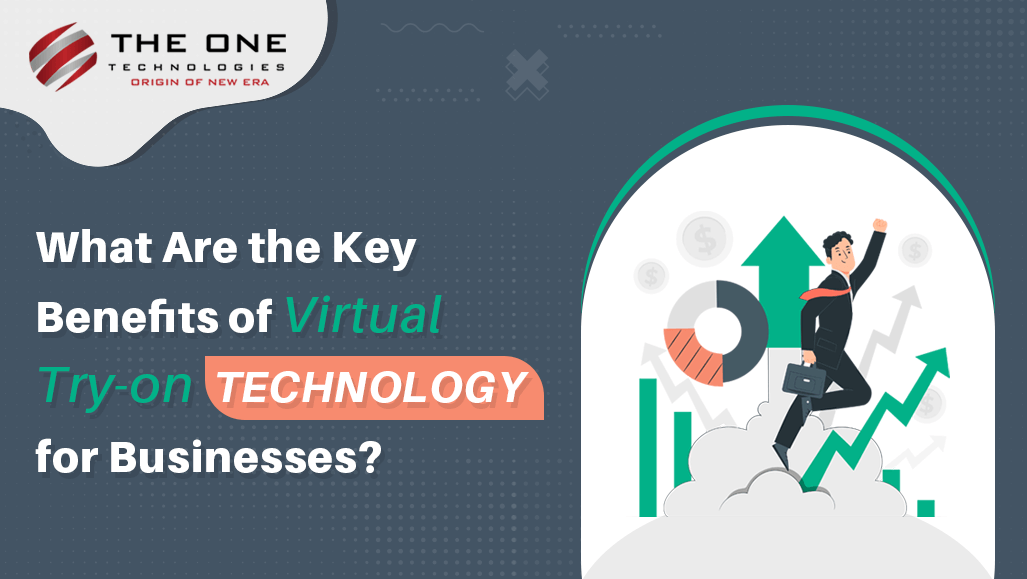
Hey There, Trendsetters and Tech Enthusiasts!
Ever wish you could try on that stunning pair of sunglasses without leaving your couch or smudging your mascara? Well, with virtual try-on technology, now you can!
Table of Contents
- What is Virtual Try-On Technology?
- How Does Virtual Try-on Work and Utilize AR/VR Technology?
- Key Components of Virtual Try-on Systems
- Benefits of Virtual Try-On
- Industries Benefiting from Virtual Try-on Systems
- Real-life Examples of Virtual Try-on Systems
- Wrapping the Virtual Try Outs
- People Also Ask
Imagine This!
You're browsing through an online store, eyeing that perfect outfit or contemplating a new pair of specs. Instead of relying solely on product images and guesswork, virtual try-on swoops in to save the day. It's like having a personal fitting room right in the palm of your hand (or on your computer screen)!
But Hold on a Sec,
What exactly is this magical virtual try-on technology, and why should businesses care? Buckle up as we dive into the world of digital dress-up and discover how it is transforming the way we shop, one AR-enhanced selfie at a time.
Whether you're in the fashion beauty industry, or even selling sleek furniture or snazzy cars, virtual try-on is the secret sauce to delighting customers and boosting those sales figures. You will need a cutting-edge mobile app development companyCalifornia to build an app that rocks and shocks your users with amusement. So, grab your virtual measuring tape and join us on this adventure through the land of augmented reality (and a touch of whimsy) as we explore the key benefits of virtual try-on technology for businesses.
Get Ready to "Try Before You Buy"
With virtual try-on, shopping just got a whole lot more fun—and a lot less stressful! Let's dive into why this tech is not only cool but also a game-changer for savvy businesses looking to stand out in the digital marketplace. So, who's up for some virtual fashion show shenanigans?
What is Virtual Try-On Technology?
Before making a purchase, customers may virtually see and feel things. Through augmented reality (AR) and virtual reality (VR) technologies, consumers may digitally try on furniture, makeup, eyewear, accessories, clothes, and even cars without interacting with them in person. This interactive experience makes shopping more personalized and increases engagement.
How Does Virtual Try-on Work and Utilize AR/VR Technology?
Virtual try-on uses augmented reality or virtual reality technologies to superimpose digital product representations onto physical situations. Through the use of a computer or mobile device's camera, augmented reality-based try-on experiences allow users to superimpose virtual objects in real time onto their environment. Conversely, VR-based try-on experiences build VR environments where users can engage with digital goods in a mocked-up setting.
⸮⸮Do You Know??
“Interacting with products that have AR experiences leads to a 94% higher conversion rate.”
Key Components of Virtual Try-on Systems
These systems are complex software programs that make use of cutting-edge technology to allow users to virtually try on goods prior to making a purchase. Let's examine each essential element in more detail:
The User Interface (UI)
The interface via which users interact with the virtual try-on features is called the UI. For a smooth user experience, the UI design needs to be visually appealing, intuitive, and user-friendly. Important components includes:
- Product Selection: Customers ought to have the ability to peruse the assortment of products on offer and choose the ones they wish to try on.
- Visualization Controls: Instruments that allow consumers to change the size, orientation, and position of a virtual product on their screen.
- Feedback Mechanisms: Instructive messages or highlighted interaction areas serve as visual cues or prompts to help users through the try-on process.
- Action Buttons: Buttons to start actions such as attempting various product variations, storing choices, or making a purchase.
A well-designed user interface (UI) improves user engagement and makes navigating simple, which eventually results in a satisfying user experience.
Visualization of Products
Product visualization is one of the most essential components of this system. It entails creating and presenting real-time digital product representations in the user's surroundings. Important features include:
- Realistic Rendering: Exquisite product rendering that mimics the appearance of the genuine thing by using precise colors, textures, and details.
- Interactive Placement: Tools that allow users to place virtual products on themselves (e.g., trying on clothes or accessories) or in their surroundings (e.g., placing furniture in a room).
- Dynamic Adjustments: The capacity to modify the dimensions, orientation, and position of a product in response to user interactions.
The goal of product visualization is to provide consumers with an accurate sneak peek at how things will feel and appear, empowering them to make well-informed decisions and eliminating doubt.
Virtual Reality and Augmented Reality Technology
The technologies behind VR and AR are essential to virtual try on experiences. With the use of these technologies, users can enter fully VR or experience immersive and interactive settings that combine digital material with the real world. Important features of AR/VR technology consist of:
- Real-time Object Tracking: Accurately positioning virtual items in actual places and making sure they remain anchored in the user's surroundings are known as real-time object tracking.
- Device Compatibility: Optimizing virtual try-on experiences for various devices, including tablets, smartphones, and AR glasses, is known as device compatibility.
AR is on the Ascend
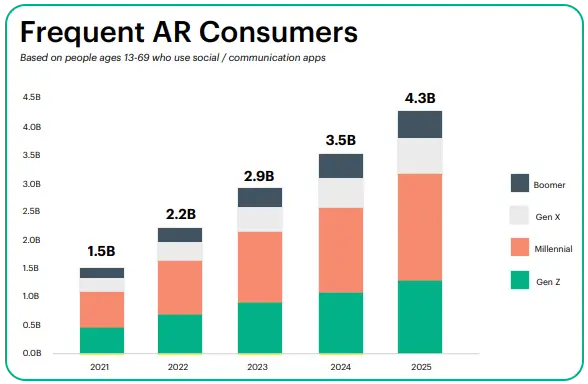
Integration with eCommerce Platforms
Virtual try-on solutions must integrate with eCommerce platforms to facilitate smooth transactions and improve the customer experience. This integration's operation and significance are as follows:
- Smooth Shopping Experience: Mobile apps and eCommerce websites frequently incorporate virtual try-on straight into their designs. Through this integration, customers can easily move from virtually trying on items to making purchases without ever leaving the platform.
- Product Catalog Sync: The product catalog of the eCommerce platform must be synchronized with virtual try-on systems. This guarantees that any product that is available is correctly displayed and reachable by users.
- Add-to-Cart Functionality: The integration makes it simple for customers to add the chosen item to their shopping cart or bag once they've tried it on and decided to buy it.
- Checkout Procedure: The checkout procedure is streamlined through integration with eCommerce platforms. Customers can save time and effort by checking out straight from the virtual try-on interface.
- Order Fulfillment: The platform manages order fulfillment, which includes handling payment processing, shipping, and delivery, following a successful purchase.
A seamless transition from product research to purchase is fostered by seamless integration with eCommerce platform, which also improves customer convenience and conversion rates.
Information and Analysis
Analytics-driven user data and behavior capture are essential for enhancing the virtual try-on experience and promoting company expansion. The following are some ways that insights and analytics help to make it successful:
- User Engagement Analysis: Analytics tools monitor how users interact with virtual try-on features, including the most popular products and how long they are tried on. This information aids in optimizing product offerings and identifying popular items.
- Conversion Rate Monitoring: Analytics track the conversion rates between virtual try-on sessions and actual sales. Findings from conversion analytics can be used to pinpoint user journey optimization opportunities.
- User Trends and Preferences: By analyzing user data, organizations can gain important insights into client preferences and customize product suggestions and marketing tactics.
- Behavioral Insights: By analyzing user behavior, it is possible to pinpoint problem areas and enhance the user experience in order to boost happiness and engagement.
- Performance Optimization: Analytics give information about loading times and stability, among other aspects of system performance. To guarantee a seamless and responsive virtual try-on experience, this data directs improvements.
Businesses may improve user happiness, make data-driven decisions, and remain flexible in response to changing market trends and consumer needs by utilizing analytics and insights to continuously improve their virtual try-on systems.
Benefits of Virtual Try-On Technology
Virtual try-on technology offers a range of benefits for businesses across various industries, revolutionizing the way customers interact with products and make purchasing decisions. Let's explore each benefit in detail:
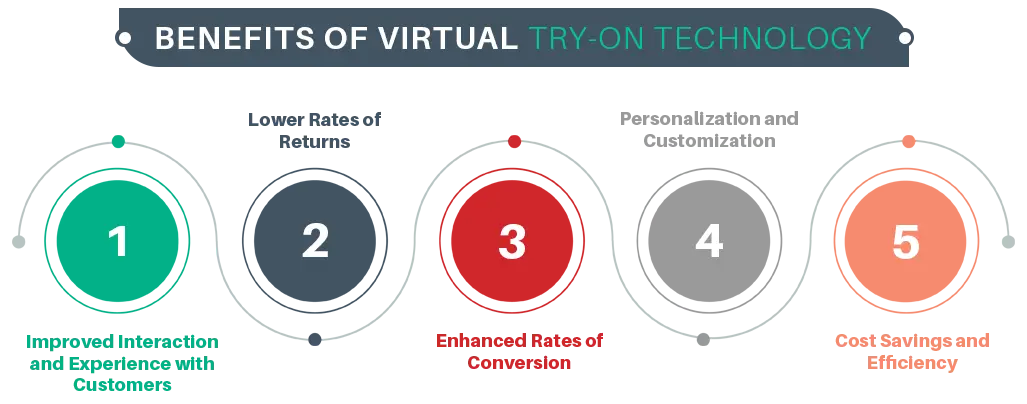
Improved Interaction and Experience with Customers
Customers can discover products in an enjoyable and dynamic way which increases customer happiness and engagement overall. This unique technology delivers an immersive shopping experience that captivates customers and motivates them to interact further with the business and its products by enabling users to see how they will appear or fit in real-time. These captivating qualities have the potential to encourage longer sessions, more frequent visits, and eventually, greater brand loyalty.
Stat Facts Alert!
- 56% of shoppers agree that AR gives them more confidence about product quality.
- Over half of the people want to use AR technology to assess products, allowing for a risk-free, “Try Before You Buy”, experience.
- Nearly 3 in 4 consumers say they're willing to pay more for a product that promises the total transparency that AR can provide.
- Returns are a $550 billion problem, which AR can help fix. AR-guided purchases led to a 25% decrease in returns.
Lower Rates of Returns
The ambiguity surrounding the appearance, fit, or quality of products is one of the biggest obstacles when shopping online. Customers can virtually try on things before making a purchase, which allays their worries. Virtual try-on lowers the possibility of making inappropriate purchases by giving a more realistic depiction of products in the context of the user's surroundings. Consequently, companies encounter decreased rates of returns and related expenses, enhancing their total operational effectiveness and client contentment.
Enhanced Rates of Conversion
Customers can make more confident purchasing selections with virtual try-on experiences. Shoppers are more likely to become consumers when they see things in real time and evaluate how well they suit their wants and preferences. The interactive and customizable features can dramatically raise conversion rates, which in turn boosts income and sales for companies.
Personalization and Customization
Personalized suggestions and customization choices based on user preferences and behavior are made possible. Businesses can provide personalized product recommendations that appeal to specific clients by examining user behaviors and preferences within the virtual try-on system. Customers feel appreciated and understood when they receive this level of individuality, which improves the entire buying experience.
Cost Savings and Efficiency
Implementing this technology can save firms a lot of money. Businesses can reduce their reliance on physical inventories and conventional marketing techniques, which can simplify operations and improve resource allocation. Additionally, it reduces the possibility of overstocking or understocking products, which enhances inventory control and cuts down on waste.
Industries Benefiting from Virtual Try-on Systems
Virtual try-on solutions are revolutionizing several sectors by improving client experiences and stimulating company expansion. Let us examine the ways in which various businesses utilize this technology to enhance customer empowerment and maximize sales.
Fashion and Apparel
With the use of virtual try on technology, consumers can now virtually put on apparel and accessories, completely changing the way people shop for fashion online. Without physically wearing them on, with augmented reality clothing fitting, users can see how clothes fit and appear on their bodies, which decreases doubt and boosts confidence when making purchases. Virtual try-on platforms for clothing and fashion enable consumers to easily put on various sizes, colors, and styles, which eventually improves customer satisfaction and lowers return rates. AR try-on clothes is rocking the industry and users are absolutely loving it.
Beauty and Cosmetics
The beauty and cosmetics sector are changing because of AR-based makeup try-on experiences. Consumers can digitally test out various makeup items, such as foundations, eyeshadows, and lipsticks. Users may securely choose beauty products that complement their skin tone and preferences by seeing how the products look on their own faces in real-time. Virtual try-ons for cosmetics allow for customized beauty advice and inspire consumers to check different makeup looks, which promotes brand loyalty and recurring business.
Accessories and Eyewear
The eyewear market is changing rapidly with glasses virtual try on technology, which makes it possible for customers to select the ideal pair of sunglasses or glasses online. Through a live camera feed or photo upload, clients may view how various frames appear on their faces. Glasses virtual try ons make the process of purchasing eyewear more convenient and pleasurable by enabling customers to evaluate comfort, fit, and style without having to visit a physical store. This technology improves conversion rates for optical businesses while lessening the inconvenience of traditional eyewear buying.
Furniture and Home Décor
AR-enabled try-on experiences are changing how consumers purchase furniture and home furnishings. Before making a purchase, customers may see how furniture will look in their living areas by using this innovative approach. Through AR, clients may place virtual furniture in their rooms and evaluate its overall beauty, size, and color coordination. Virtual try-ons for home décor reduce the possibility of returns for mismatched or ill-fitting styles and increase customer confidence when making large-ticket online purchases.
Automotive
Vehicle configurators that use VR technology are revolutionizing the automotive sector by enabling users to personalize and view automobiles in fully realistic virtual settings. Before deciding to buy, users can virtually experience their dream car by customizing elements like color, trim, and extras. VR-based automobile configurators offer a highly interactive and personalized experience that improves consumer engagement, eliminates the need for in-person showroom visits, and expedites the car-buying process.
Real-life Examples of Virtual Try-on Systems
This technology has gained widespread adoption across various industries, revolutionizing the way customers interact with products and make informed purchasing decisions. Let's delve into real-life examples of successful implementations:
Sephora Virtual Artist
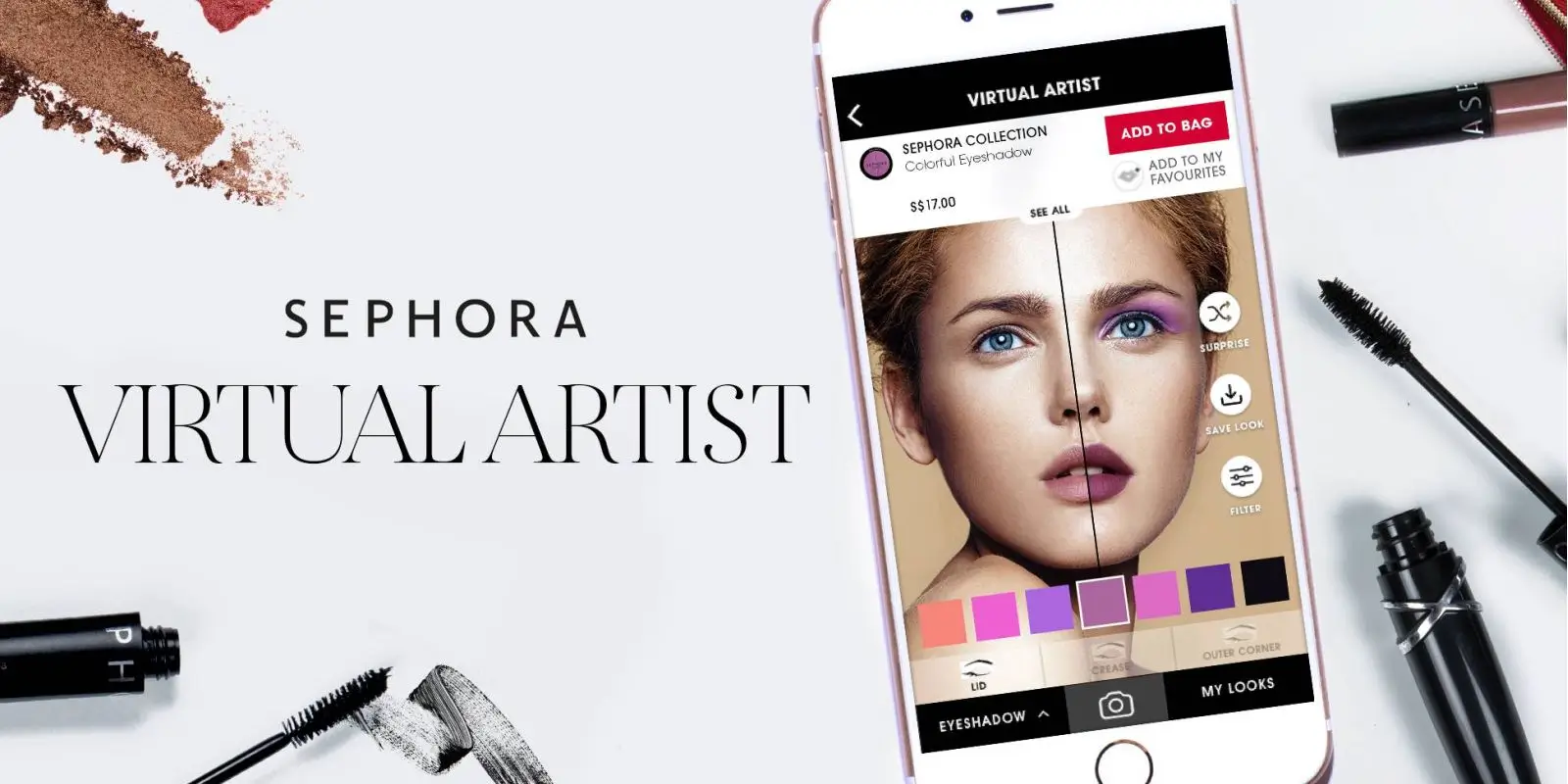
The Virtual Artist app was released by Sephora, a well-known beauty company, to improve the online makeup shopping experience. Using the camera on their smartphone, users can realistically try on beauty products thanks to the app's usage of augmented reality (AR) technology. Consumers may see how various lipstick, eyeshadow, and blush tones will appear on their faces by experimenting with them in real-time. Additionally, based on skin tone and preferences, Sephora's Virtual Artist offers customized beauty recommendations, enabling clients to explore new makeup looks and confidently select the products that best suit them.
Warby Parker
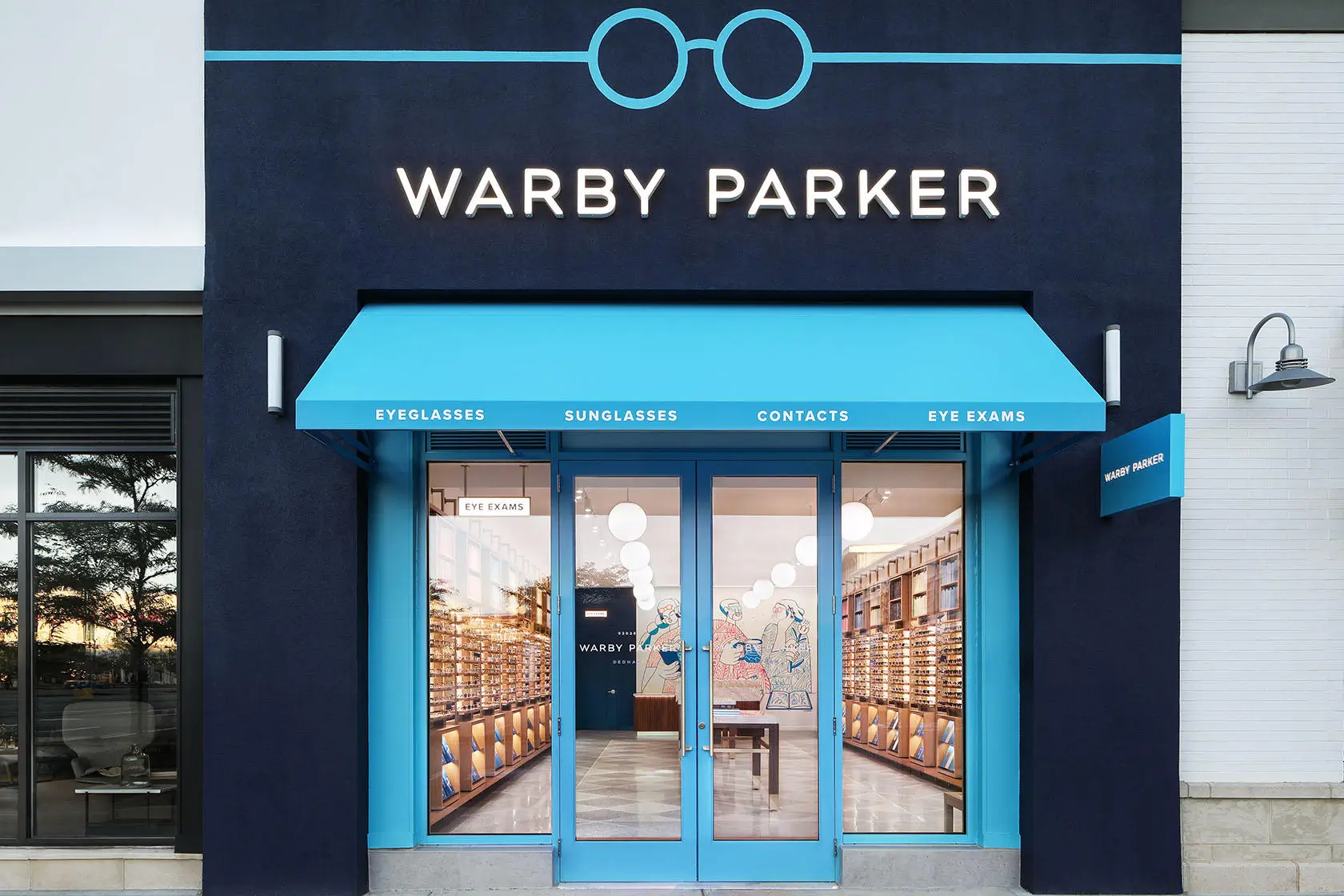
The well-known eyewear company Warby Parker provides a virtual try-on option on its mobile app and website. By uploading a selfie or utilizing the camera on their device, users can virtually try on glasses. Clients can choose eyewear that flatters their face shape and style by seeing how various frames appear on themselves. The virtual try-on function from Warby Parker improves the online eyeglasses shopping experience by empowering customers to make informed choices and lowering the level of anxiety surrounding online glasses purchases.
IKEA Store
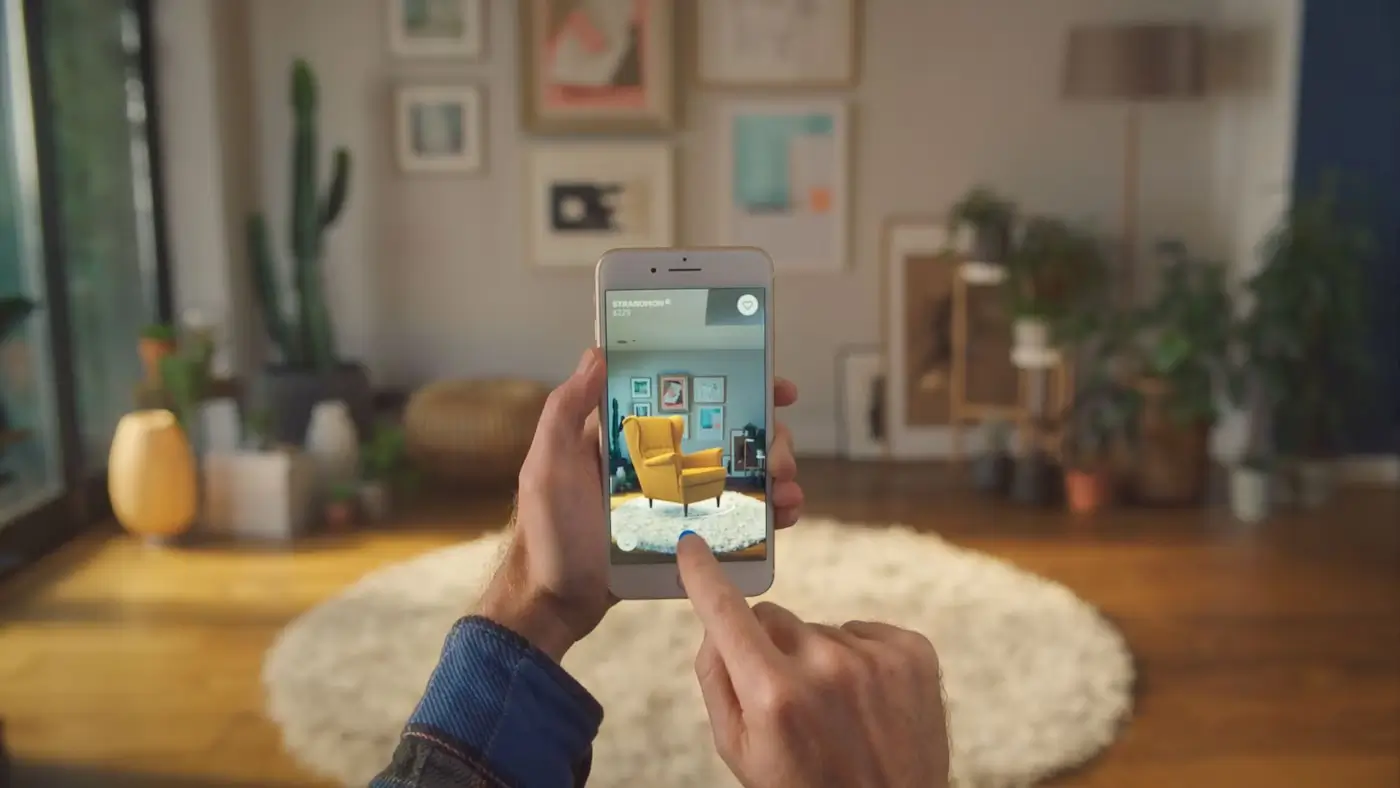
Before making a purchase, buyers may see furniture and home decor items in their own living rooms with the use of augmented reality app, IKEA Place. Customers may precisely measure size, scale, and aesthetics by virtually placing IKEA products in their spaces using their smartphones or tablets. Customers may test out various furniture arrangements and configurations in this app, giving them the confidence to buy without having to go to a physical store. In addition to increasing customer pleasure, this immersive and engaging shopping experience lowers the possibility of returns.
Volvo Reality

Volvo Cars developed the VR app Volvo Reality, which allows customers to virtually explore and customize Volvo automobiles. Users can explore features, interiors, and exterior designs of detailed 3D Volvo models through VR technology. Volvo Reality offers a highly customized car-buying experience by letting buyers choose colors, trims, and accessories for their vehicles. Volvo uses virtual reality to improve consumer interaction and help make educated decisions, which in turn increases sales and brand loyalty.
Lenskart
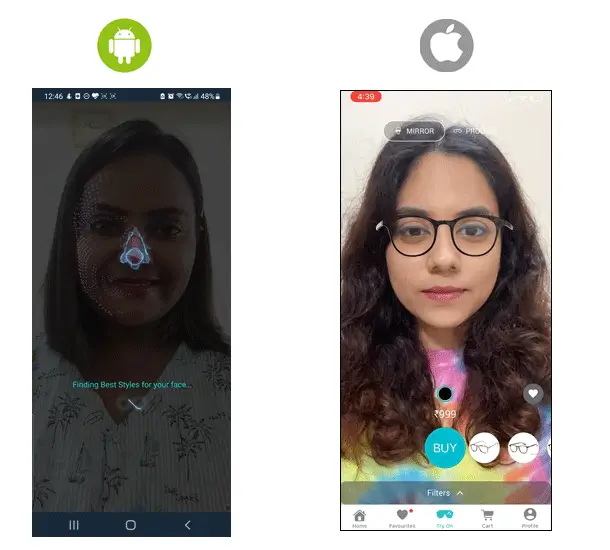
Customers may try on sunglasses and eyeglasses using Lenskart's virtual try-on option, which is available from the renowned eyewear retailer. Using AR, the application projects virtual eyeglasses in real-time onto the user's face so they may see several frame options before making a purchase. With the help of Lenskart's virtual try-on tool, customers may find the ideal pair of glasses that complement their tastes and style more easily when shopping for eyewear online.
Wrapping the Virtual Try Outs
This game-changing technology has a lot to offer companies in a lot of different sectors. It can improve consumer experience and engagement, lower return rates, and increase conversion rates only if you pick the right eCommerce development company. Businesses may develop engaging and dynamic retail experiences that appeal to contemporary consumers and boost sales and brand loyalty by utilizing AR and VR technologies.
People Also Ask
How does technology for virtual try-ons improve consumer interaction?
Customers can discover products in an interactive and captivating way with the help of this technology. Businesses may develop immersive experiences that capture customers and enhance overall brand engagement by enabling users to perceive things in real time and interact with them virtually.
How might virtual try-on technology help businesses lower their return rates?
Through the reduction of uncertainty in purchase decisions, lower return rates are achieved. Customers are less likely to receive inappropriate items because they can preview how products will fit or look before making a purchase. Businesses save time and money as a result of better-informed purchases and fewer returns.
Can conversion rates be increased with virtual try-on technology?
Yes, increased conversion rates are frequently a result of this technology. Businesses can notice increased conversion rates as users are more inclined to complete transactions when they are empowered to clearly perceive products and make informed decisions.
How can the ability to virtually try things enhance the buying experience?
Personalized recommendations based on user preferences and behavior are made possible by this technology. Businesses can provide a more personalized and gratifying shopping experience for customers by providing individualized product suggestions based on analysis of user activities.
Does virtual try-on technology result in cost savings for companies?
Yes, businesses can save money by using virtual try-on technology. Businesses can achieve resource optimization and operational efficiency by decreasing the requirement for physical inventories and conventional marketing techniques. Additionally, it also reduces the possibility of overstocking or understocking products, which enhances inventory control and cuts down on waste.
Is technology for virtual try-on appropriate for every industry?
Numerous businesses, including fashion, beauty, eyewear, home décor, furniture, automobile, and more, might profit from this technology. It can be used by any company that involves the visualization of products and customer interaction to improve the shopping experience and stimulate business growth.
How can companies incorporate technology for virtual try-ons into their online storefronts?
Businesses that work with technology providers that specialize in AR or VR solutions can incorporate it into their eCommerce platforms. To enable real-time product interaction, integration usually entails integrating virtual try-on elements straight into product pages or mobile apps.
What possible difficulties can arise when putting virtual try-on technology into practice?
It has many advantages, but there are drawbacks for businesses as well, like technological complexity, data protection issues, and making sure the technology integrates seamlessly with current systems. To effectively handle these issues, firms must collaborate with seasoned IT partners.










